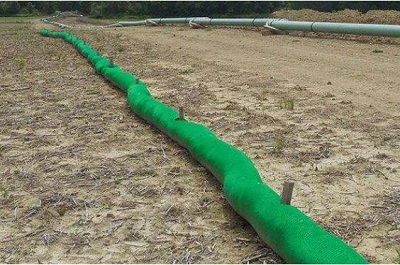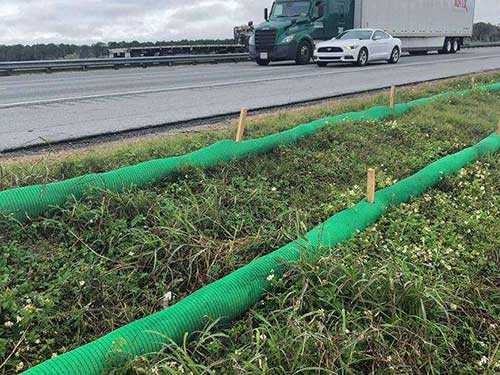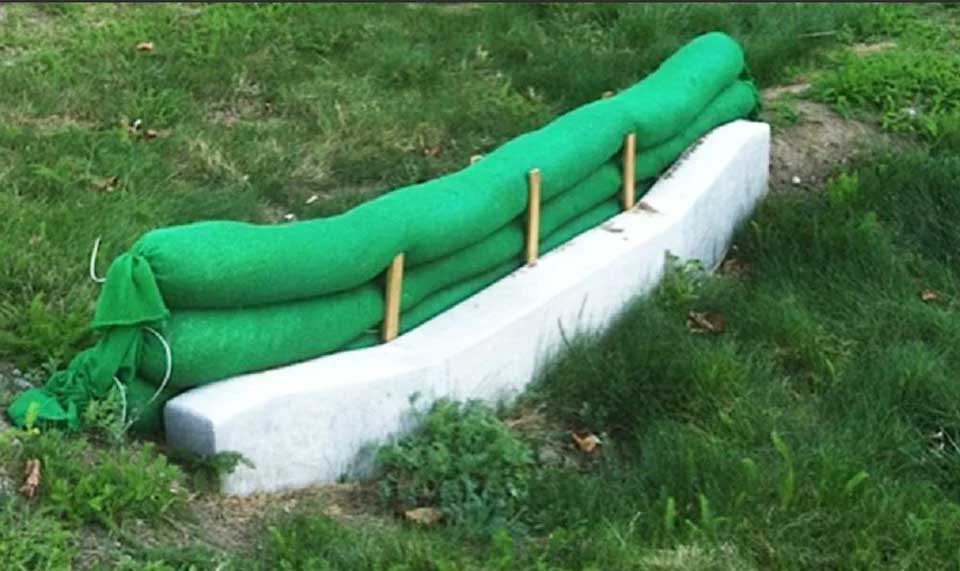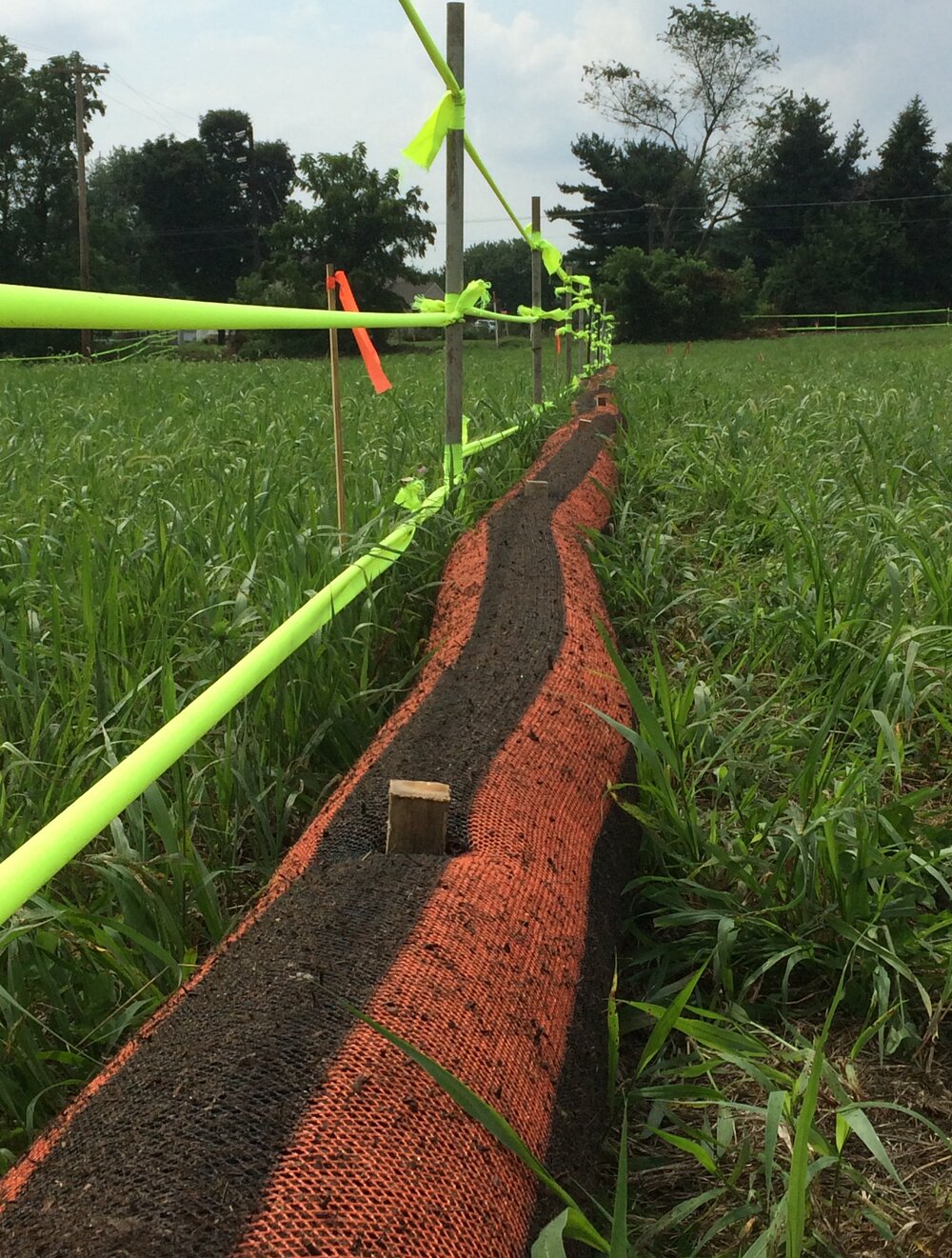Silt Sock
BRP Erosion Biosock is an environmentally friendly erosion control for wetlands, waterways, and general areas under construction.
Erosion Biosock
BRP Erosion Biosock Protect your job site and the environment with SRW Silt Sock—a reliable, eco-friendly erosion control solution.

- Environmentally friendly erosion control for wetlands, waterways, and general areas under construction
- Filters 90% of sediment from runoff
- Easy Install, Reusable
- No equipment needed to install
- Resists and prevents wash out in sloped ditches or slopes

- Erosion Control Slopes
- Cover Septic Systems
- Highway Slopes
- Embankments
- Shoreline Stabilization

PART NUMBER
FCMSS 0820 BLK
SIZE
8″x20′
QUANTITY
8/PLT


For Dealers:
If you’re a dealer interested in offering our products in your store or want to arrange an in-store demonstration for your team and customers, we’ve got you covered.
Simply reached out to your local sales rep who will guide you through the process, share product details, and help set up everything you need to get started.
Looking to Buy? We’re Here to Help You Get Started.
For Contractors:
If you’re a contractor looking to explore or test one of our high-quality products for your upcoming project, we’d love to assist you.
You can Find a local dealer in your area to make a purchase, or connect with your regional sales representative to schedule a hands-on demo and get personalized recommendations based on your needs.
For Homeowners:
If you’re a homeowner planning a project and looking to buy our products for personal use, we’re here to make it easy for you.
You can find a nearby authorized dealer in your area to purchase our trusted products with confidence and get expert guidance if needed.

IMPORTANTS
- Silt Sock Installation Guidelines
- Silt Sock Maintenance
- Silt Sock Repairs
Installation on Vegetated Ground:
Silt socks may be installed without trenching when placed on vegetated surfaces. Be sure to backfill all gaps and ruts to prevent bypass flow.Sock Overlap:
When connecting two sock sections, ensure they overlap in the direction of water flow with a minimum overlap of 24 inches, or as specified by local authorities.Anchoring & Staking:
Secure each section using stakes or anchors as recommended by the manufacturer or as required under applicable approvals.Sediment Accumulation:
If sediment builds up to 50% of the sock's height, install an additional silt sock immediately upslope of the original to maintain effective filtration.Joining on Level Ground:
Where two socks meet on a level grade, overlap and tighten the ends together and secure each end with proper staking.Joining on Uneven Terrain:
On sloped or uneven ground, J-hook the higher-elevation end, stake it in place, and start the new sock section just below. Ensure all gaps are properly backfilled.Installation Angle:
Position the silt sock at an angle between 45° and 90° relative to the direction of flow for optimal performance.Restricted Areas:
Do not install silt socks below the normal high-water mark if positioned perpendicular to flow in rivers or streams, or on slopes exceeding a 50% incline.
Issue: Deformation from vehicle drive-over or dragging
Action: Manually re-contour the sock where possible. If manual repair isn’t feasible, follow approved repair procedures.
Issue: Sock displacement caused by hydraulic force
Action: Reposition the sock and secure it with additional stakes to prevent further movement.
Issue: Loss of contact with the ground
Action: Fill any ground depressions and backfill using chips or material from a damaged sock section to restore contact.
Issue: Sediment buildup reaching half the sock’s height
Action: Either remove the accumulated sediment or install a second silt sock upslope or directly on top of the original to maintain functionality.
Issue: Holes, rips, or tears in the sock
Action:
For small holes or rips less than 12 inches, secure the damaged area using plastic zip-ties or suitable stitching.
For tears longer than 12 inches, the damaged sock section must be replaced.
Issue: Pinching or reduced diameter (more than 50% of original size)
Action:
Install a new silt sock section upslope of the damaged area to restore performance.
Note: The silt sock is a highly effective erosion control solution, but its performance depends on correct installation and ongoing maintenance.

Frequently Asked Questions
How do I properly install a silt sock?
Silt socks should be installed directly on vegetated ground without trenching. Ensure all gaps and ruts are backfilled. Overlap each sock section by at least 24 inches in the direction of water flow, and secure them with stakes or anchors as recommended by the manufacturer.
When should a silt sock be replaced or repaired?
If there are holes or tears shorter than 12 inches, they can be repaired using zip-ties. For damage over 12 inches or pinching that reduces the sock’s diameter by more than half, replace the damaged section with a new sock installed upslope.
How do I maintain a silt sock on an active job site?
Regularly check for deformation, displacement, or loss of ground contact. Re-contour socks if driven over, add stakes if they roll or shift, and fill in any ground depressions. If sediment accumulates to half the sock’s height, remove it or add a second sock upslope.
Can I install a silt sock on uneven or sloped terrain?
Yes. On uneven ground, use a J-hook at the higher end and secure it properly before continuing the new section downhill. Always backfill gaps and install the sock between 45° to 90° to the direction of water flow.
Are there locations where silt socks should not be used?
Yes. Do not place silt socks below the high-water mark in rivers or streams if installed perpendicular to flow, or on slopes exceeding a 50% incline, as this may compromise their effectiveness and stability.





